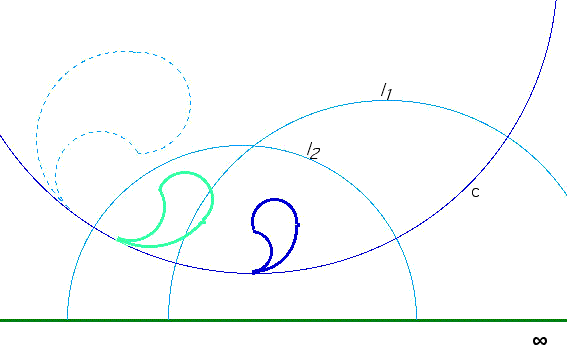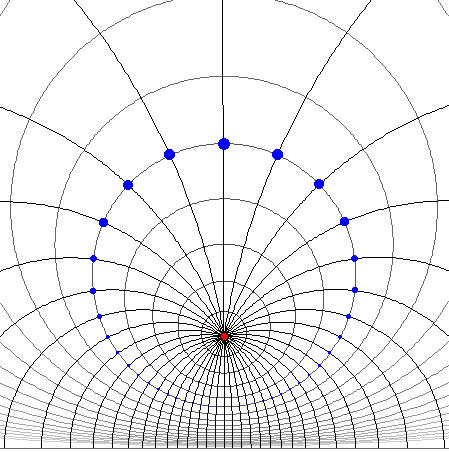
An isometry is a rigid motion, that is a movement that preserves distances. It turns out that any isometry can be obtained by applying one or more reflections in turn. For example, in the Euclidean plane, if we reflect first across one line, and then another, we will obtain either a rotation or a translation, depending on whether the lines of reflection meet or not. (See Symmetry and The Shape of Space for a discussion of isometries in the Euclidean plane).
Similarly, we can build up isometries of the hyperbolic plane by applying a series of reflections. If we reflect across a pair of geodesics, we will have three cases, depending on whether the geodesics intersect, meet at a point at infinity, or do not meet at all.
These will give rise to rotations, parabolic transformations, or translations, respectively.
Suppose two lines of reflection intersect somewhere in the hyperbolic plane. Reflecting first across one line, then across the other, the end result will be a rotation about this point of intersection. Here for example, reflecting the dark blue image across l1 produces the dotted image. Reflecting this across l2 produces the light blue image. The light blue image is the result of rotating the dark blue image about the intersection of l1 and l2. Click on the image to download an interactive demonstration. (To use the demonstrations, you must have Geometer's Sketchpad. A demo version is available here)
A rotation will be centered about a point, and as points are rotated about this point they will follow hyperbolic circles.
Again, you can download an interactive version of this image.

You can download a Quicktime movie of a series of rotations about a point:
(Be sure to set the movies to Loop in the Movie Menu in your Quicktime player)
Next: Parabolic Transformations.
Chaim Goodman-Strauss strauss@delojo.com